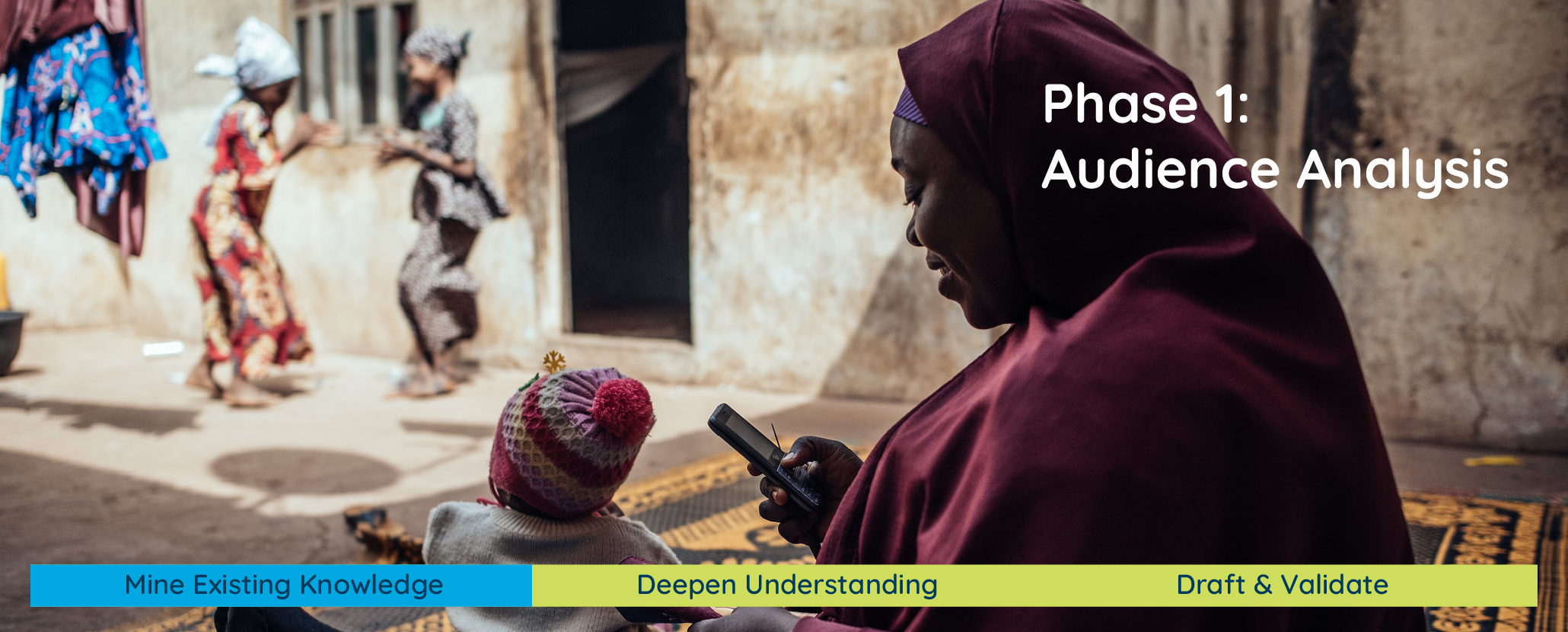Mine Existing Knowledge

Les Audience Analysis phase establishes understanding of the intended audience and factors influencing their behavior. Gather evidence from existing knowledge and published literature. If more evidence is needed, consider whether to use quantitative or qualitative methods. Many of the tools below are adapted from the Implementing the SBC Flow Chart toolkit.
Mine Existing Knowledge
How can we use what is already known?
By the end of this step, your team will understand the existing data and be able to concisely summarize the findings of a literature review or situation analysis.
How to conduct this step and achieve its main objectives:
Review Existing Knowledge
A literature review is a powerful tool to thoroughly examine current knowledge on a topic. When done well, it identifies common themes, patterns, and compelling areas for exploration to guide you and inform the audience analysis phase. The review also identifies research gaps and areas for further inquiry.
Literature Review Scope of Work
Suggested time:
4 hours
Participants:
Core design team; RMEL unit
Tool: Literature Review Scope of Work
Determining the scale and scope of the literature review at the very beginning ensures your efforts stay focused. The questions in the Literature Review Scope of Work Tool are designed to prompt the core design team working with the Research Monitoring Evaluation and Learning (RMEL) Unit to define the literature review parameters that will guide the review team when they are seeking resources.
Effort required:

Literature Review
Suggested time:
Multiple days, depending on size and scope
Participants:
Core design team; RMEL unit
Tool: Literature Review
Audience profiles encapsulate the characteristics of product or service users, encompassing their needs, goals, and activities. These profiles are constructed through research involving real individuals and draw upon shared characteristics within a particular ecosystem. This tool serves as a valuable resource for organizing the wide-ranging needs and contexts of people. It offers a solid reference point to gain insight into the target audience and determine the most suitable solutions to support them.
Effort required:

Research Synthesis
Suggested time:
Multiple days, depending on size and scope
Participants:
Core design team; RMEL unit
Tool: Research Synthesis
Once you have gathered the pertinent information, this template helps you synthesize the research, leading you through a structured synthesis process to distill the most relevant knowledge, harvest and cluster important data, identify key themes, and extract critical insights from the gathered information.
Effort required:

Alternative: Use a Consultant for the Literature Review
Conducting a literature review and synthesizing the results are critical, but time-consuming steps. It may be helpful to assign this task to a single person from your core design team or to enlist outside help, such as a reputable consultant or trusted colleague from within your organization. The Scope of Work (SOW) tool is a good starting point to begin a conversation with those who will conduct the literature review.
Assess Evidence for Actionability
Decision Point: Evidence Review
By the end of this step, you will know whether you have enough insights into the intended audience and their behavioral influences. Depending on your campaign objective, existing data may not be sufficient, and additional research can help fill in any gaps.
Insights Assessment
Suggested time:
1-2 hours
Participants:
Core design team; RMEL unit
Tool: Insights Assessment
Once you have completed your literature review, the insights assessment tool will help determine if you have enough evidence or if additional qualitative or quantitative research is needed to improve your understanding.
Effort required:

